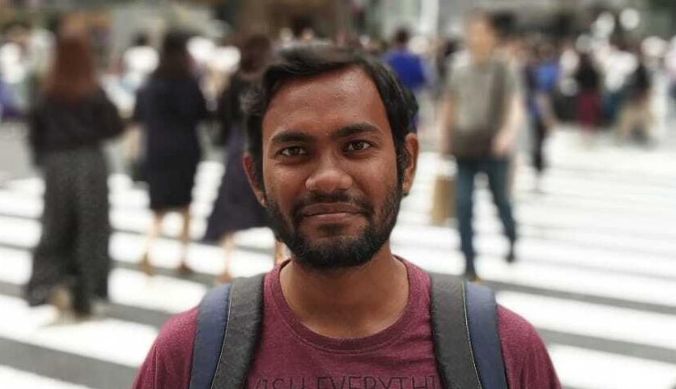Professor Ashwini Deshpande talks about the gendered effects of the pandemic and the Indian economy post-COVID
We are in conversation with Ashwini Deshpande, Professor of Economics and Founding Director, Centre for Economic Policy and Analysis.

Office of PR & Communications
10 March, 2021 | 4m readThe pandemic’s effects on women have been extremely disproportionate. There is clear evidence of a gendered impact of COVID in the arena of employment according to Deshpande. She further added that when we assess the impact of COVID on the gender gap in employment, we have to be mindful of the large pre-existing gender gaps in employment that preceded the pandemic. There have been far greater layoffs of women than men, the same goes for the losses of businesses, highlights an article on The Hindu.
And if we look at the post-pandemic Indian economy, to be back at the before-pandemic level, it will surely take time. “The economy will spring back to life only when people have money in their hands, i.e. purchasing power,” said Deshpande.
From assessing the post-pandemic recovery of India’s economy, to the gendered effects of the COVID-19 especially its impact on the gender gaps in paid and unpaid work through the lockdown and recovery phases, and the Centre’s recent research and events, Deshpande touched upon many critical issues related to India’s economic development.
How do you assess the post-pandemic recovery of the India’s economy? What are the factors according to you affecting the recovery?
After the massive dip in economic activity in April 2020 due to the complete nationwide lockdown, between May and July, as the economy gradually unlocked, employment also increased. However, from September to December 2020, employment recovery petered off, with a decrease in the total number of people employed compared to the previous month, according to Centre for Monitoring Indian Economy (CMIE) data. The decline in employment was larger for women than men, for rural areas compared to urban, and the largest for daily wagers, hawkers, i.e. the most precarious workers. The first CEDA-CMIE bulletin shows these trends in employment over the full year.
On the CEDA website, we have also documented the corresponding decline in incomes and expenses, which took a massive hit in April 2020. The latest available data show that they have not recovered to the pre-pandemic levels.
What the last year has demonstrated is that a lockdown is a good “off” switch (i.e. a strict lockdown stops economic activity), but a lifting of the lockdown is not an automatic “on” switch. The economy will spring back to life only when people have money in their hands, i.e. purchasing power. When incomes are severely depressed, producers will halt or slow down production since they don’t anticipate sufficient demand for their output. This leads to a vicious cycle of slow employment growth leading to slow growth in purchasing power and demand, and the cycle repeats itself.
A key lesson from earlier episodes of global recessions (2001 or 2008-9) is that relatively strong domestic demand insulated the Indian economy to a large extent and prevented a drastic decline in GDP growth rates. This factor is not going to cushion the Indian economy in the pandemic-induced recession because the growth rate was already slowing down before the pandemic for many reasons, including two large back-to-back negative economic shocks due to demonetisation and the new GST regime. Both these had already resulted in sharp fall in domestic demand leading to low and sluggish growth. The crisis of demand was already in place before the pandemic hit. The drastic fall in economic activity due to the pandemic means job and income losses for an unprecedented number of people, further exacerbating the demand crisis.
The only way out of this vicious cycle is a strong boost by the government to increase demand. This must involve direct cash transfers, payroll support to small and micro enterprises and many other measures. We at CEDA were among the first to flesh out a comprehensive set of policy measures needed to ensure economic recovery and to minimise human hardship.
The gendered effects of the pandemic – in one of your recent papers (The COVID-19 Pandemic and Gendered Division of Paid and Unpaid Work: Evidence from India), you have examined the high frequency national-level panel data from CMIE on paid work (employment), unpaid work (time spent on domestic work) and incomes. Could you elaborate on the effects of Covid-19 on the gender gaps in paid and unpaid work through the lockdown and recovery phases?
Many impacts of the pandemic are gendered. Several countries such as the US have released gender-disaggregated data on COVID incidence. Barring a few states in India, we don’t know if women are disproportionately hit by co compared to men.
However, there is clear evidence of a gendered impact of COVID in the arena of employment. When we assess the impact of COVID on the gender gap in employment, we have to be mindful of the large pre-existing gender gaps in employment that preceded the pandemic. Women’s labour force participation rate has been lower than men’s for decades in India and has been declining in recent years. Therefore, it was natural to find that in absolute numbers, more men lost jobs in April 2020 compared to women. However, after accounting for pre-pandemic employment, women’s chances of being employed in August 2020 were lower by 9.5 percentage points compared to men, relative to their pre-pandemic employment. By December 2020, gender gaps in employment were back to their pre-pandemic levels.
Women are over-represented among essential workers and frontline health workers (ASHA, ANMs and Anganwadi workers), who have been the unknown, nameless(s) heroes of the fight against COVID in India. They faced massive challenges arising from lack of PPE, social stigma, were also subject to violence from the community and they braved all this while being pathetically underpaid.
UN Women has focused attention on the “shadow pandemic”: women calling helplines because they or their children are being abused at home, with or without physical violence. The lockdown provides the perfect opportunity to the abuser to practise “intimate terrorism” – dictate and control all actions and movements of women, with violence if needed.
The increased violence is not just a result of the frustration due to physical confinement. The pandemic has brought in its wake a global slowdown, massive economic dislocation, closed businesses, the spectre of looming unemployment, often accompanied by the threat of hunger and poverty for what seems to be an indefinite future. While both men and women are affected by the economic downturn, there is evidence from the past that violence against women increases during episodes of high unemployment.
Another concern is reduced access to contraceptives due to the shutting down of condom manufacturing units. Previous research has found that natural disasters have led to significant increases in childbirth rates, leading to significant challenges such as reduced investments in children, particularly girls, and adverse effects on women’s health.
According to the Women@Work report by a non-for-profit, work-life balance has become worse for working women with work from home during the pandemic. Your comment.
Lockdowns impose unequal burdens of housework and care work on men and women everywhere, but disproportionately more in societies such as India, where women spend much more time on domestic chores and care work.
The CMIE has some evidence on time spent on domestic work. In April 2020 the average time spent on domestic work by men increased, as families were confined indoors and domestic workers, the invisible backbone of middle-class India, stayed away from work. This resulted in reduced gender gap in domestic work. However, by August 2020, men’s time had decreased already, and by December 2020, men were spending much less time on domestic work compared to December 2019, and women were spending much more. In other words, the gender gap in unpaid work has significantly worsened in the first year of the pandemic.
The pandemic has also quite disproportionately impacted people belonging to the lowest-ranked caste and under BPL. One of your papers (Is COVID-19 “The Great Leveler”? The Critical Role of Social Identity in Lockdown- induced Job Losses) examines this. Would you talk more about this?
The main point to recognise is that large segments of economic activity, especially in urban areas, run on the backs of workers employed informally or casually, often on daily wages, who are circular migrants. These workers are either wage workers (construction or factory workers, shop helpers, workers in the transportation sector, hospitality etc.) or self-employed (small shopkeepers, running dairy, poultry, livestock businesses, or eateries, barbers, tailors, electricians, plumbers etc.). The sudden closure of economic activity means that they no longer earn an income, with no certainty about when and in what form economic activity can resume. They also live in extremely inhospitable, congested and unsanitary environments in cities, where concepts such as social distancing and the recommended hygienic practices are meaningless, and therefore, expecting a massive behavioural change is not realistic.
However, even within economically vulnerable populations, social identity matters. Therefore, it is equally important to recognise that lockdowns and decline in economic activity affect different social groups differently.
The pandemic has seen ugly, vicious expressions of racist and communal hatred, in the spread of which mainstream media has taken an active part. Government machinery, particularly the police, must be actively vigilant to prevent discrimination and ensure that relief, assistance and materials reach everyone, irrespective of their caste, religion, or tribal status.
Then pandemic will abate one day, but if it leaves behind a large population that is unhealthy because of being deprived of minimum subsistence, it will adversely impact India’s growth potential for several years to come. If unbridled bigotry is allowed to flourish under the “new normal”, the resulting discrimination will result in large parts of India’s vast reservoir of labour under-utilised and incorrectly rewarded.
As we battle a grave health and economic crisis, we need to put humanity centre-stage. That is the only way to devise a long-term policy framework directed towards alleviating human suffering, especially of the most vulnerable.
Can you tell us briefly about some of your current and/or upcoming research work happening at the Centre for Economic Data and Analysis, and any exciting new events taking place?
The previous responses contain glimpses of what we are doing at CEDA. I am very excited by the data portal that we have just launched. CEDA’s user-driven and interactive data portal allows you to generate and download visualisations (heat maps, bar charts, graphs) and tables of a large range of socio-economic and demographic indicators (e.g. employment, education, health, fertility, sex ratios and much more) based on large national level datasets for India. You can connect variables across time, across geographies (national, state and district) and across social groups (e.g. gender, caste, tribe and religious categories). You can also plot two variables from the same dataset or from different datasets against one another to see how they correlate.
We were very fortunate to be able to inaugurate the data portal along with the Infosys Prize Lecture by the renowned economist Raj Chetty. One can watch the video here.
Keep checking the CEDA website for exciting updates!











